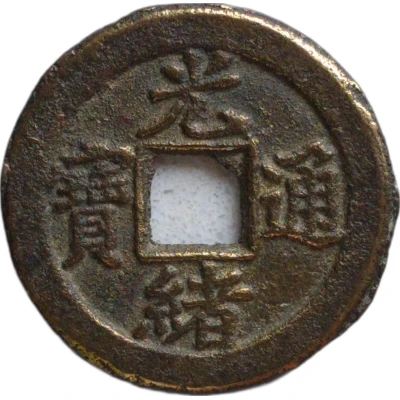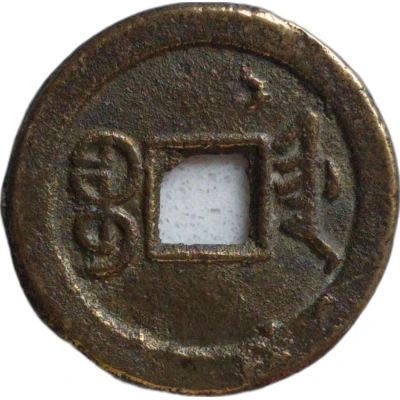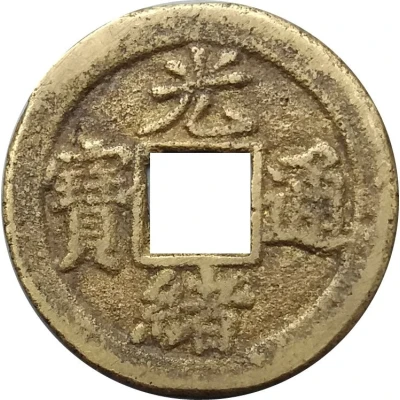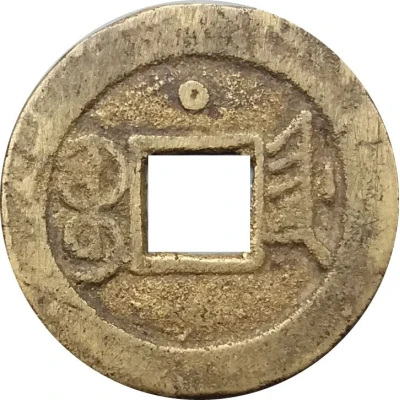


© gros (CC BY-NC-SA)
1 Cash - Guangxu Tongbao; Boo-jiyen; with crescent ND
| Brass | 2.64 g | 22 mm |
| Issuer | Empire of China |
|---|---|
| Emperor | Qing dynasty › Guangxu (光緒帝) (1875-1908) |
| Type | Standard circulation coin |
| Years | 1896-1900 |
| Value | 1 Cash |
| Currency | Cash (621-1912) |
| Composition | Brass |
| Weight | 2.64 g |
| Diameter | 22 mm |
| Shape | Round with a square hole |
| Technique | Cast |
| Orientation | Medal alignment ↑↑ |
| Demonetized | Yes |
| Updated | 2024-10-04 |
| Numista | N#227463 |
|---|---|
| Rarity index | 93% |
Reverse
Two Manchu words (read vertically) separated by the hole, all with crescent or apostrophe at various locations.
Script: Mongolian / Manchu
Lettering: ᠪᠣᠣ ᠵᡳᠶᡝᠨ
Translation: Boo-jiyen
Edge
Plain
Comment
Picture is for 22.1457 with apostrophe
Interesting fact
One interesting fact about the Standard circulation coin 1 Cash - Guangxu (Tongbao; Boo-jiyen; with crescent) ND (1896-1900) from Empire of China made of Brass weighing 2.64 g is that it was designed by a French engraver named Jean-Antoine Rivoire, who was commissioned by the Chinese government to create a new coinage system for the country. The coin features a unique blend of traditional Chinese design elements, such as the crescent moon and stars, with Western-style engraving techniques, making it a distinctive and rare collector's item.

